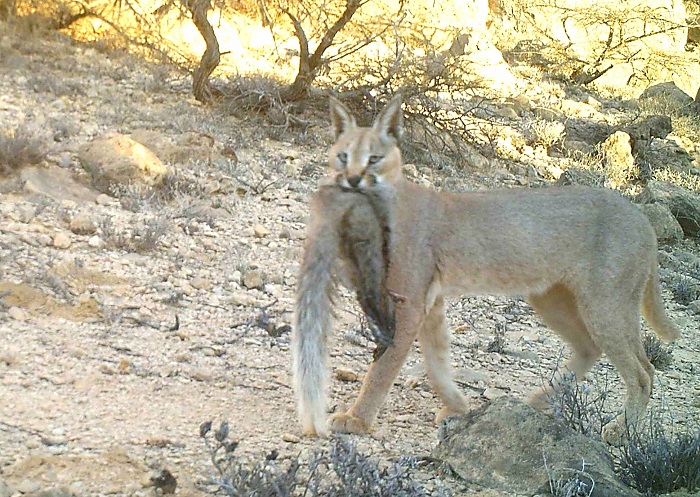The lynx is a medium-sized feline that inhabits the mountains of the Dhofar Governorate in the Sultanate of Oman. A recent scientific report published by Omani researchers highlights the predatory behavior of the lynx, with a camera trap capturing footage of it preying on a white-tailed mongoose. This observation represents the first scientific evidence of a lynx hunting a white-tailed mongoose in the Arabian Peninsula.
Dr. Hadi bin Muslim Al Hakamani, a member of the research team, explains that while the lynx is widely distributed in the Arabian Peninsula, little is known about its predatory behavior and diet in the region. Previous studies have focused on tracking lynx with wireless devices and analyzing dung samples, but this report provides valuable insights into the dietary habits of the lynx in Oman.
The lynx is classified as “least threatened” globally by the International Union for Conservation of Nature (IUCN), but regional assessments for North Africa, West and Central Asia, including the Arabian Peninsula, consider it threatened with extinction. In Oman, the lynx is found in the mountains of the Dhofar Governorate and the Musandam Mountains but is not present in sandy areas like the Empty Quarter and the Sharqiyah Sands.
The main threats facing the lynx in the Arabian Peninsula include habitat loss due to paved roads and the construction of population centers. Changes in prey availability can impact the lynx’s life strategies, population dynamics, and ability to adapt to a changing environment influenced by climate change. Field surveys in the mountains of Dhofar Governorate have shown that the lynx preys on small mammals, rock hyraxes, and birds like the Arabian partridge.
These findings are crucial for environmental agencies interested in protecting and reintroducing the lynx in the region. By understanding the behavior and diet of the lynx, conservation efforts can be tailored to ensure the survival of this unique species in the Arabian Peninsula. The lynx plays a vital role in the ecosystem as a top predator, and its conservation is essential for maintaining biodiversity in the region.





















